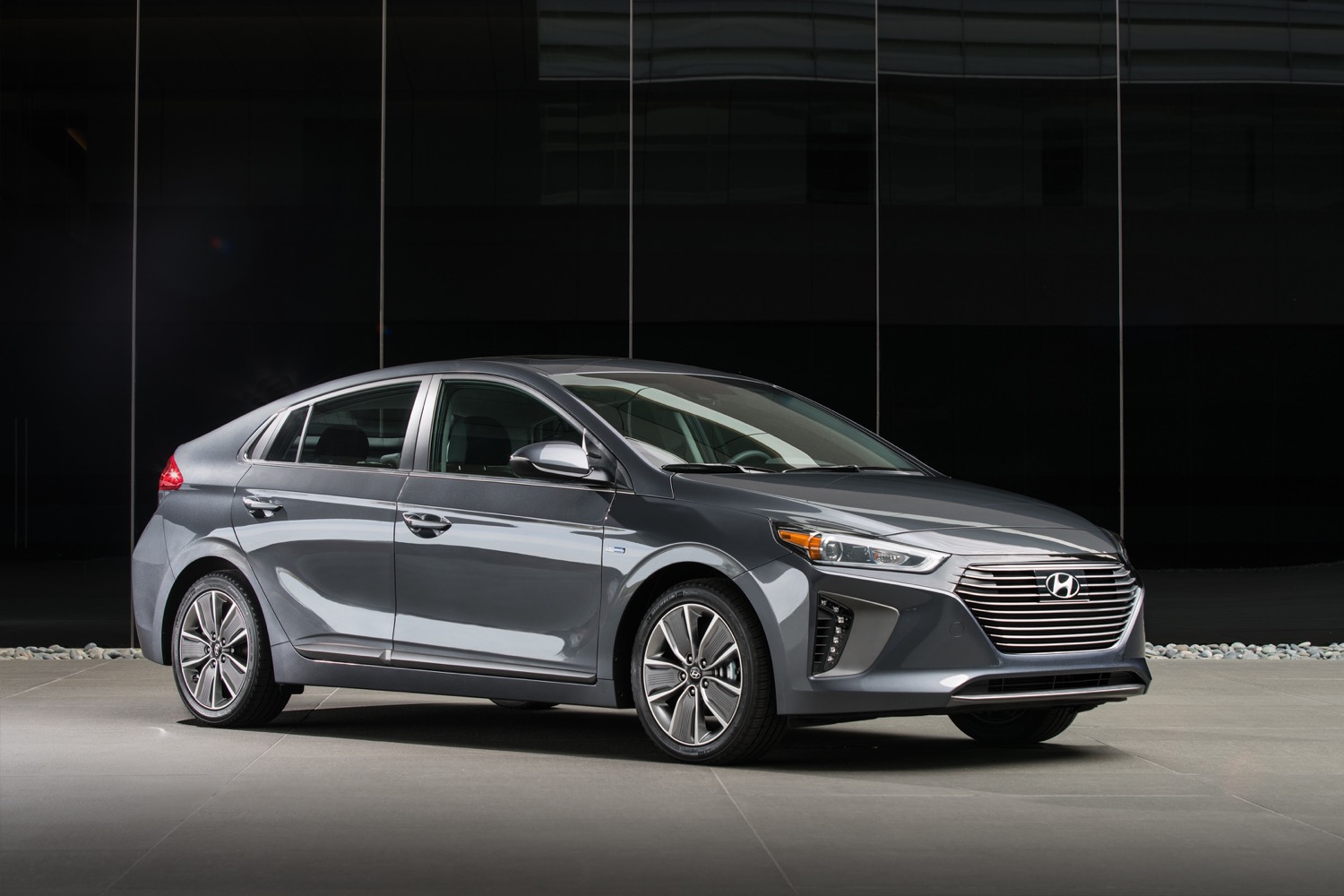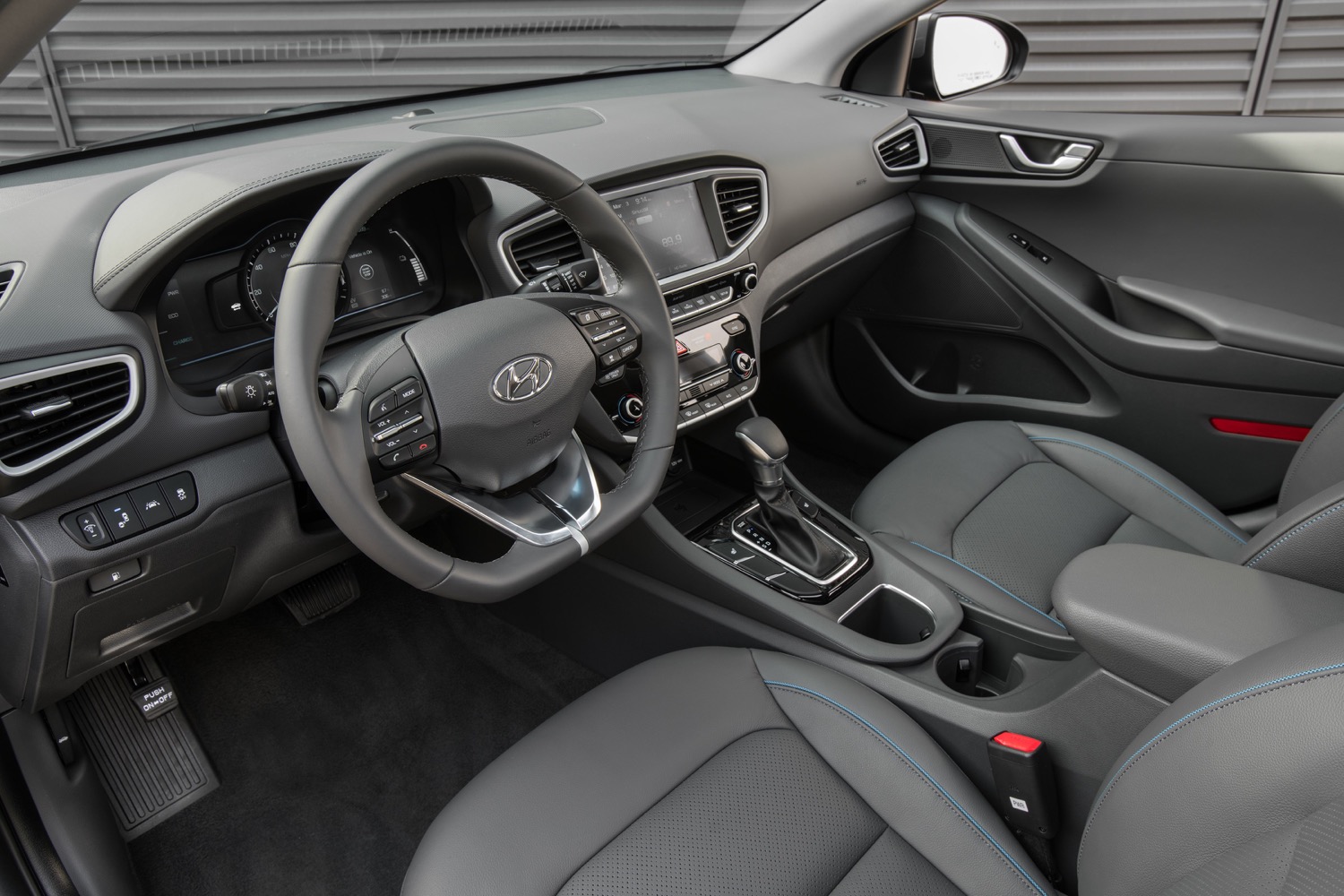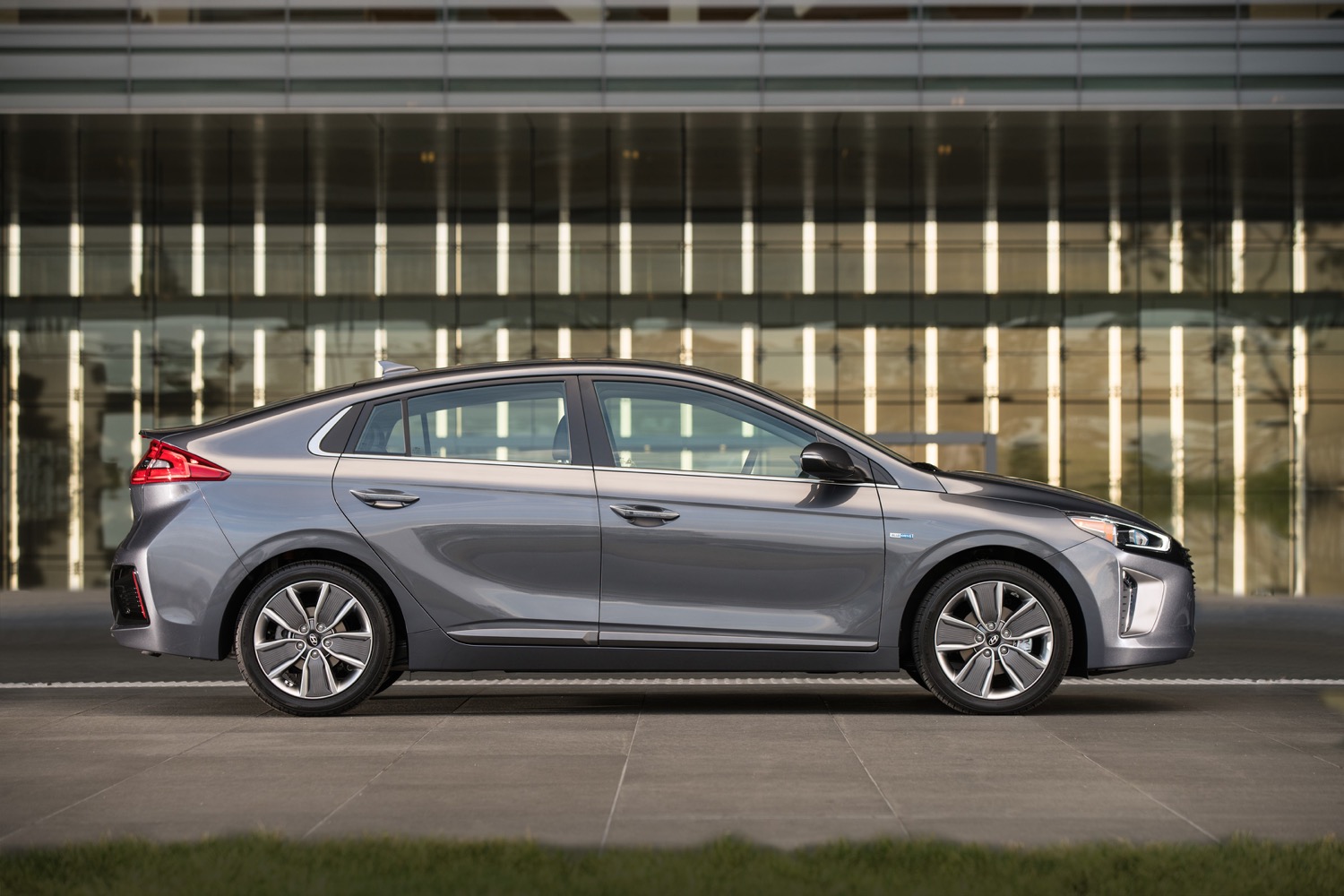
New for 2017
The Ioniq is an all-new model.
All of the Above
When it comes to green cars, buyers have plenty of choices. But depending on whether one wants a hybrid, plug-in hybrid, or all-electric car, that means choosing one of dozens of other models and potentially having to make some unwanted compromises. Enter the 2017 Hyundai Ioniq, which offers all three powertrains in the same car. It shows that Hyundai is serious about green cars.
Performance
The Ioniq will be unique among new cars in offering hybrid, plug-in hybrid, and all-electric powertrains in the same model. This gives consumers more choices, and pits the Ioniq against a wide variety of competitor models, from the Toyota Prius to the Nissan Leaf.
The Ioniq Hybrid uses a 1.6-liter Atkinson-cycle four-cylinder engine, assisted by an electric motor and 1.56-kilowatt-hour lithium-ion battery pack. Total system output is 139 horsepower, which is sent to the front wheels through a six-speed dual-clutch transmission. Hyundai claims this quick-shifting transmission will make the Ioniq more fun to drive than other hybrids.
 The Ioniq Plug-In Hybrid uses the same 1.6-liter engine and dual-clutch transmission, but features a more powerful electric motor and a larger, 8.9-kWh battery pack. Hyundai estimates an electric-only range of “more than 25 miles,” while EPA fuel-economy ratings for both the Hybrid and Plug-In Hybrid models will be released closer to launch.
The Ioniq Plug-In Hybrid uses the same 1.6-liter engine and dual-clutch transmission, but features a more powerful electric motor and a larger, 8.9-kWh battery pack. Hyundai estimates an electric-only range of “more than 25 miles,” while EPA fuel-economy ratings for both the Hybrid and Plug-In Hybrid models will be released closer to launch.
Finally, the Ioniq Electric boasts 120 hp and 215 pound-feet of torque from its electric motor. A 28-kWh lithium-ion battery pack will provide an estimated driving range of 110 miles, Hyundai says. The carmaker also expects an efficiency rating of 125 MPGe. The Ioniq Electric will be offered with a 100-kilowatt CCS DC fast-charging system, which can recharge the battery to 80 percent capacity in about 20 minutes.
Features
The 2017 Hyundai Ioniq is a five-door, five-seat hatchback. Pricing and full details on standard and optional equipment will be released closer to the Ioniq’s launch later this year.
Standard equipment includes LED daytime running lights, cloth seats with YES Essentials stain-resistant fabric, 60/40 split-folding rear seatback, dual-zone automatic climate control, tilt/telescoping steering column, 7.0-inch touchscreen display audio system, Bluetooth®, SiriusXM® satellite radio, HD Radio®, and Apple CarPlay® and Android Auto™ smartphone connectivity.
 Optional features include HID headlights, LED taillights, heated side-view mirrors, sunroof, 7.0-inch LCD instrument cluster gauges, leather seats, heated power front seats, leather-wrapped steering wheel, LED interior illumination, navigation, Infinity premium audio system, Hyundai Blue Link connected-car system, and Qi wireless phone charging.
Optional features include HID headlights, LED taillights, heated side-view mirrors, sunroof, 7.0-inch LCD instrument cluster gauges, leather seats, heated power front seats, leather-wrapped steering wheel, LED interior illumination, navigation, Infinity premium audio system, Hyundai Blue Link connected-car system, and Qi wireless phone charging.
Design
All three versions of the 2017 Hyundai Ioniq share a body with a sleek hatchback shape that provides an impressive drag coefficient of 0.24. At first glance, the Ioniq appears similar to the Toyota Prius, Chevrolet Volt, and other green cars, but its design is a bit sportier, with a more pronounced hood, sculpted sides, and a distinctive grille.
Each model gets its own individual detailing as well. The Ioniq Hybrid is distinguished by contrasting colors at the base of the bumper fascia, and model-specific 15- and 17-inch alloy wheels. The Plug-In Hybrid has the same styling elements as the Hybrid, as well as LED headlights and its own 16-inch wheels. The Ionic Electric gets a smooth front fascia for better aerodynamics, and special “eco-spoke” alloy wheels.
 The interior was designed around a “Purified High-Tech” concept meant to give it a de-cluttered, futuristic quality. It is cleanly designed with some sporty touches like the flat-bottomed steering wheel. Hyundai managed to avoid over-styling things, which helps make the interior look high tech.
The interior was designed around a “Purified High-Tech” concept meant to give it a de-cluttered, futuristic quality. It is cleanly designed with some sporty touches like the flat-bottomed steering wheel. Hyundai managed to avoid over-styling things, which helps make the interior look high tech.
Many manufacturers tout efficient powertrains, but Hyundai tried to emphasize sustainability with the Ioniq’s interior as well. The door covers are made from powdered wood and volcanic stone rather than the usual plastic, and sugarcane was used in the headliner and carpet. Hyundai also used paint derived from soybean oil, and equipped the Ioniq with an efficiency-focused air conditioner.
Safety
Standard safety equipment on the 2017 Hyundai Ioniq includes anti-lock brakes, stability and traction controls, hill-start assist, a rearview camera, and seven airbags. Optional features include automatic emergency braking, blind spot monitoring, rear cross traffic alert, rear parking sensors, lane departure warning, and adaptive cruise control.
Verdict
The 2017 Hyundai Ioniq sets a new precedent for green cars by offering three powertrains in one model. It gives consumers a lot to think about.
To be among the first to experience the all-new Hyundai Ioniq, contact us at 3Birds Template.
*EPA estimates. Your mileage will vary depending on driving habits and conditions.
**Prices listed are Manufacturer's Suggested Retail Price for the vehicle and options chosen by you. These prices do not include transportation, taxes, title, other options, dealer installation costs, or other dealer charges.
Image Credit: Hyundai
